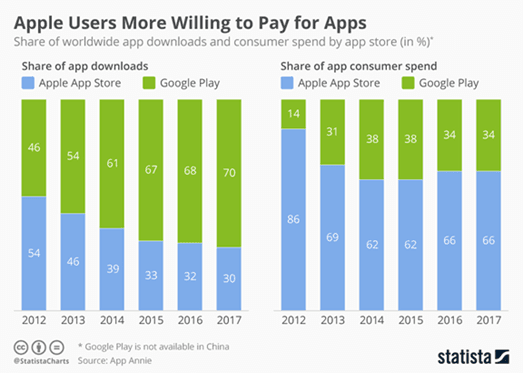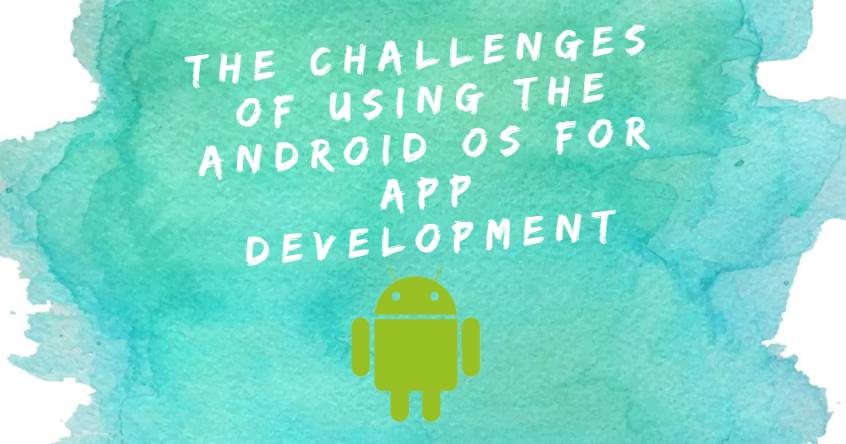We all know that Android is one of the most popular platforms for developers to use when creating apps. It’s not surprising—it’s easy to use, open source software that can help developers keep tighter control over costs. With a global market share of 72.23%, it’s clear that there’s no stopping Android anytime soon.
The growth of Android and its domination of the market is something that prompted Nick from Tech Jury to learn as much as he could. He then decided to share that information in the awesome infographic that you’ll see directly below this post.
It’s extremely interesting, and you’ll find a lot of sites singing the praises the operating system. We prefer to offer a more balanced view, so in this post, we’ll concentrate on the cons of using the Android operating system. That way, you can make a more informed decision about whether or not Android is the way to go for your app.
Android Users Spend Less Money
When we look at the amount spent on users in the Apple Store, versus users in Google Play, a clear pattern emerges—Apple users spend more money on apps. You can see for yourself in the chart from Statista.

Source: Statista
It should be noted that a big contributing factor to the difference in spending could be that the Google Play Store is blocked in China, whereas the Apple Store is not. Considering that around 69% of app downloads in 2017 were from China, this makes a big difference.
If people in China were allowed to use the Google Play Store, we’d probably see those figures becoming more equalized. However, it doesn’t look like the Chinese government is going to back down anytime soon. So, when it comes to getting the biggest possible market of app users, Apple far exceeds Android.
You have to consider not only the sale of the apps but also the in-app purchases. Considering that the Chinese downloaded 79.3 billion apps in 2017 alone and that the forecast is that this figure will increase to 119.5 in 2022, that’s a huge number of potential sales to be missing out on.
Security Problems
The open source nature of the software makes it simple to get started, even on a small budget. It’s also something that can be extremely annoying for developers when Google releases a new security patch. Considering that this happens just about every week, it’s definitely something to consider.
The problem is not the patches themselves, but that users seldom update the operating system on their phones. This means that developers have to ensure greater security for users of the app, and considering working in high-level encryption. This makes the process more complex and expensive.
You Have to Consider Several Devices
Using the Apple iOS is simpler because there are a limited number of devices to consider. With Android, you have to ensure that your app works over a far greater range of devices. It’s not the easiest task in the world, considering that there are thousands of different models out there.
Making a generic app that will work across such a large range of devices can be difficult. Performance issues are bound to creep in with some models.
It’s Harder to Test Your App
While there are ways to test your app, the number of different versions of Android software out there make it hard to do it effectively. Devices might run on older versions of the operating system, and this makes proper testing more complex.
Copyright Might be an Issue
Google is far laxer about checking the apps that are accepted into its store. This is great when you want to get your app out there as fast as possible. The downside is that Google doesn’t actually check copyright records.
You could, inadvertently, release an app that has similar features to one already out there. This could land you in hot water in terms of copyright laws. It also means that someone might easily copy your app and post a version of it in the Play Store.
Final Notes
So, all is not as rosy as could be when it comes to Android. It’s a great operating system, for sure, and it can be useful for developers. But there are also challenges that should be noted, and addressed.









